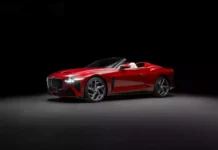In the scope of the article below, we will compare the luxury features, features, and performance of the Honda CR-V 2.4L 2016 and the Mazda CX-5 2.5L 2016.
Exterior design
In terms of design, depending on the perspective of each person, some people have feelings for the Honda CR-V while others prefer the Mazda CX-5.
The Honda CR-V 2016 follows its own distinctive design language, the Exciting H Design, with a large single-blade grille connecting the headlamps and a central H logo. While the front of the car is highly regarded for its sporty and rugged look, the rear is a downside. Many people even call it a “pregnant duck tail”.
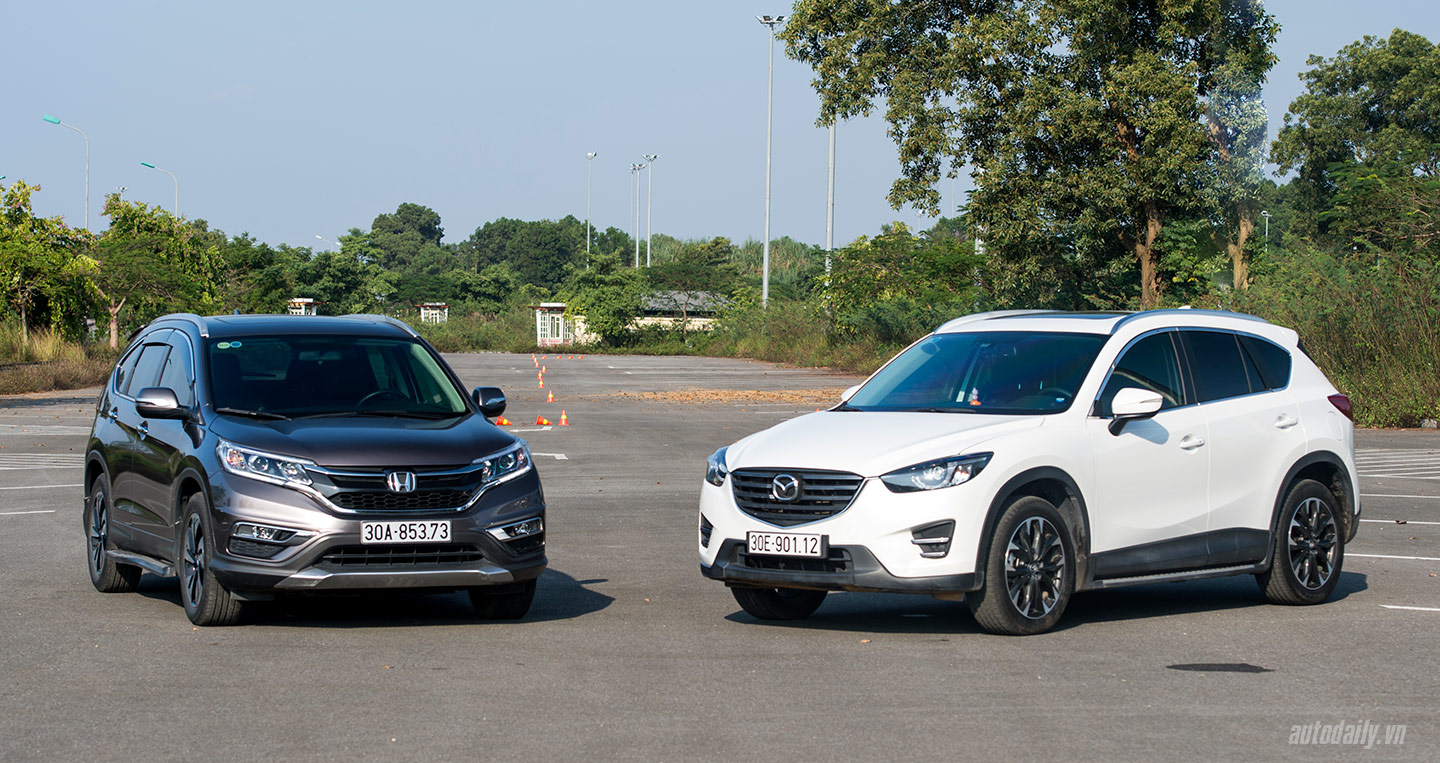 Honda CR-V vs Mazda CX-5: An exciting battle in Vietnam.
Honda CR-V vs Mazda CX-5: An exciting battle in Vietnam.
As for the Mazda CX-5, the car has a dynamic and balanced appearance, following the design philosophy of “Kodo – Soul of Motion”. It is suitable for the aesthetic tastes of both male and female customers. In addition, the Mazda CX-5 also has some unique features such as self-adjusting bi-xenon headlights, steering-assist headlights, and automatic wipers.
The common points of the 2 cars are: LED daytime running lights, fog lights, high mount brake lights, electrically folding mirrors with integrated turn signals, and alloy wheels.
The Mazda CX-5 looks more modern and has stronger lines. The CX-5 looks compact, while the CR-V has a sense of prestige and solidity.
Although the Mazda CX-5 has a slightly longer wheelbase than the Honda CR-V; 2,700 mm compared to 2,620 mm; the CR-V still feels more spacious inside. Perhaps this is partly due to Mazda’s design philosophy and many of their models feeling a bit cramped inside.
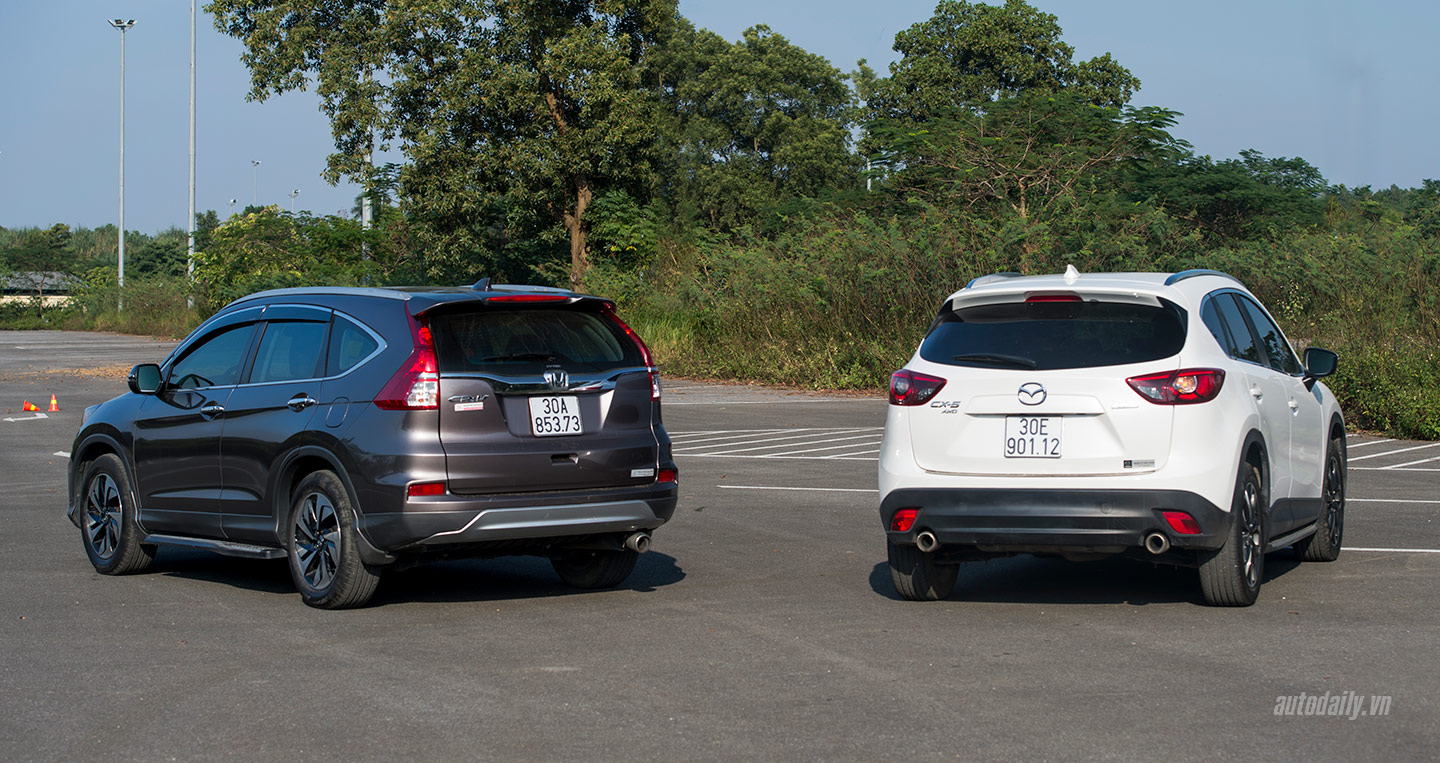
Interior space
For the 5-seater crossover segment, consumers often pay attention to the cargo capacity. In this category, the CR-V has a much greater advantage over the CX-5. When the second row of seats is folded up, the cargo area of the CR-V is 556 liters while the CX-5 only has 403 liters. However, during the test of fitting 2 golf bags and a paragliding bag, both spaces were able to accommodate them.
In the second row of seats, the Honda CR-V continues to have an advantage over its competitors with very comfortable seating. There is ample legroom from the knees to the front seats and from the front to the roof. In addition, the CR-V has 2 additional advantages – the second row of seats can be reclined and has air-conditioning vents, making passengers feel comfortable, especially on long journeys.
The CX-5, on the other hand, is inferior to its competitor as the second row of seats cannot be reclined and does not have air-conditioning vents. The space in this area is also far behind its competitors.
But when it comes to the space for the driver and front passenger, the CX-5 receives more praise than the CR-V. The CX-5 has a more upscale and modern design with electronic parking brake, rotating control knob for the infotainment system, sports driving mode, 10-way power-adjustable seats, 6-way power-adjustable passenger seats, and a 9-speaker Bose sound system. Meanwhile, the CR-V has a simple style with 8-way power-adjustable seats, manually adjustable passenger seats, ECON fuel-saving driving mode, and a 6-speaker audio system.
The common points between the CR-V and CX-5 in the cabin are the leather-wrapped multifunction steering wheel, luxurious leather seats, cruise control, Start/Stop button, sunroof, automatic air conditioning, CD/Radio/MP3/AUX/USB entertainment system, and the rear seats can be folded down to increase cargo space.
Performance
The Honda CR-V 2.4L 2016 uses a 2.4L DOHC, i4, i-VTEC engine, producing 189 horsepower at 7,000 rpm, maximum torque of 220 Nm at 4,400 rpm, paired with a 5-speed automatic transmission and front-wheel drive.
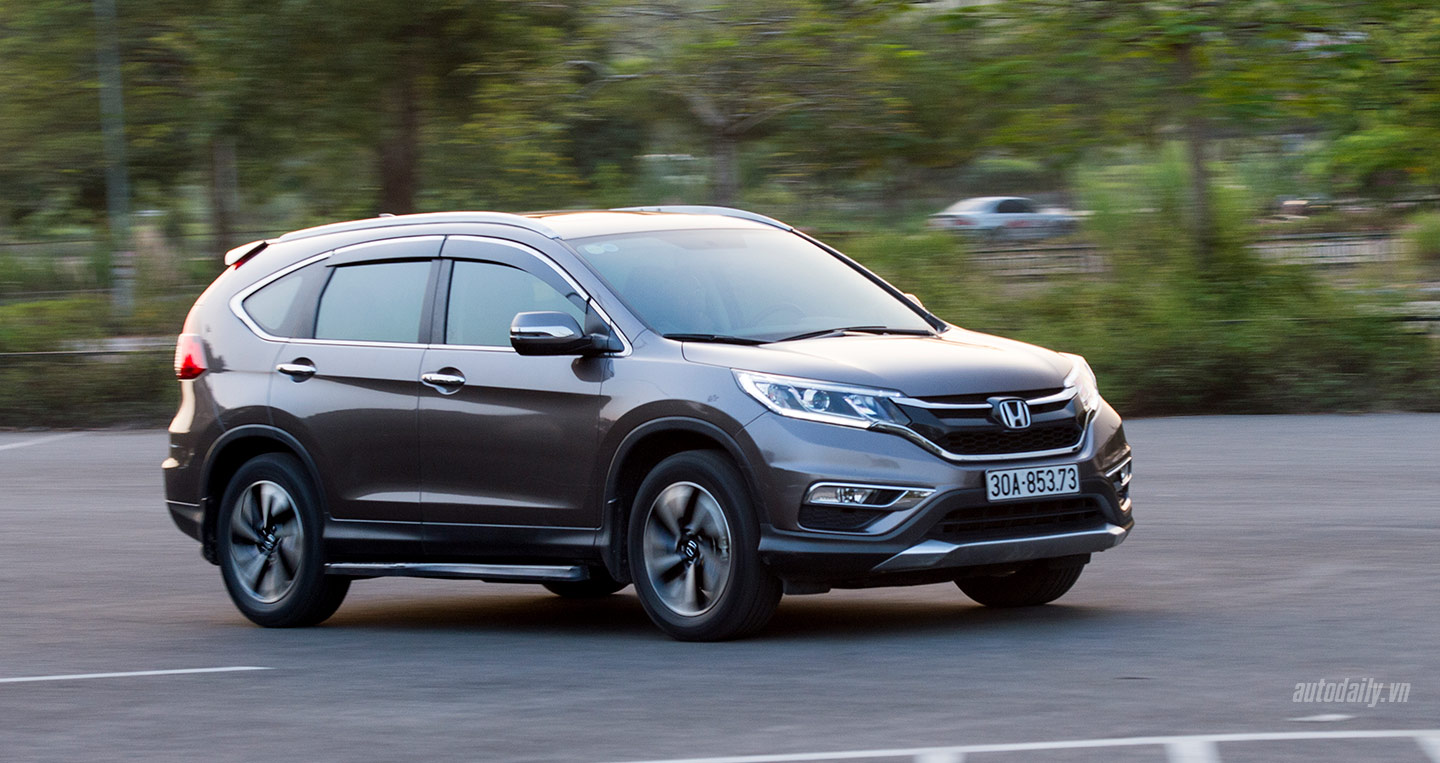
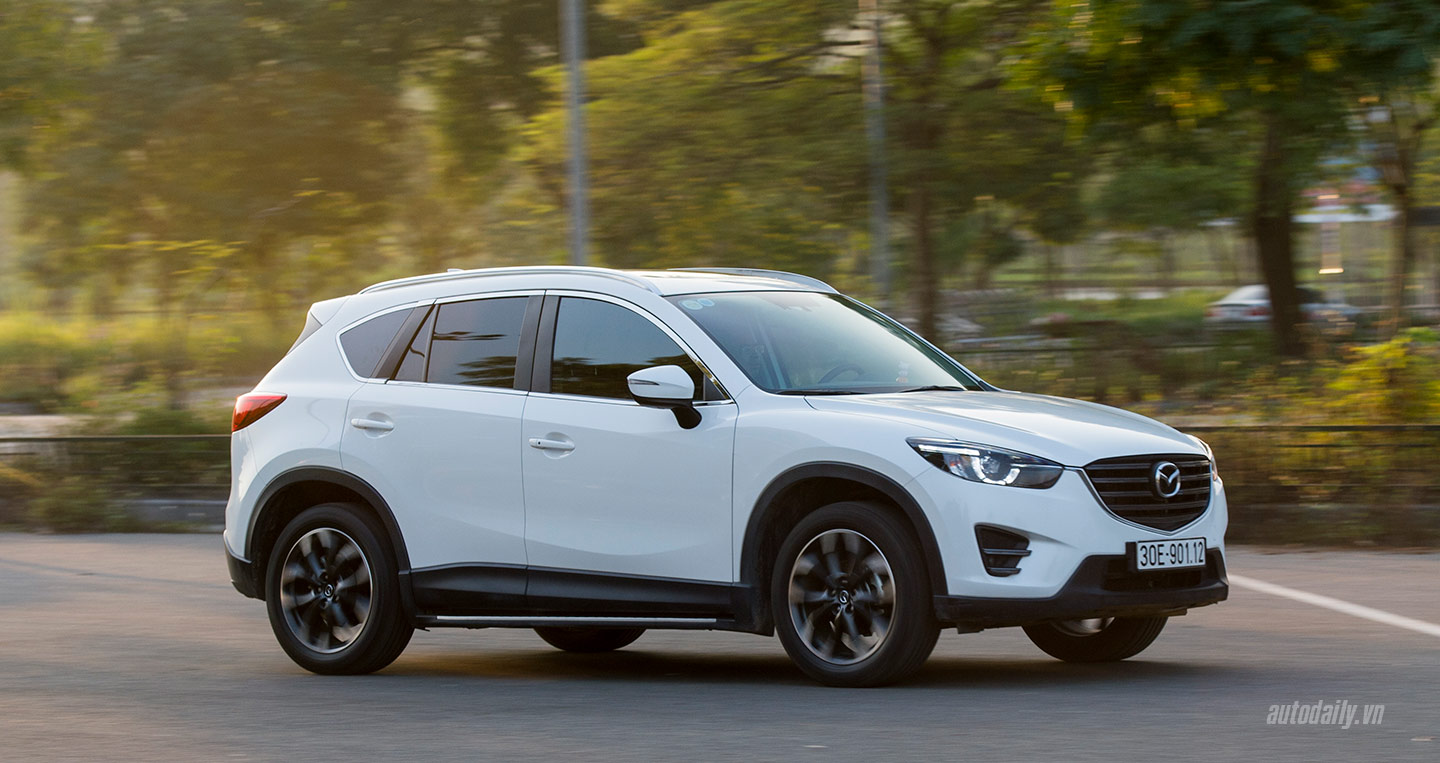
On the other hand, the Mazda CX-5 2.5L 2016 uses a Skyactiv-G 2.5L engine, producing 185 horsepower at 6,000 rpm, maximum torque of 250 Nm at 3,250 rpm, paired with a 6-speed automatic transmission and all-wheel drive, one of the major advantages compared to the CR-V.
To assess the performance of the CR-V and CX-5, we conducted 3 tests using professional Race Logic equipment: Acceleration from 0-100km/h, Braking from 100km/h-0, and slalom. Additionally, we also used a noise measuring device to test the noise levels of these two cars.
The test results using Race Logic equipment and noise measuring device:
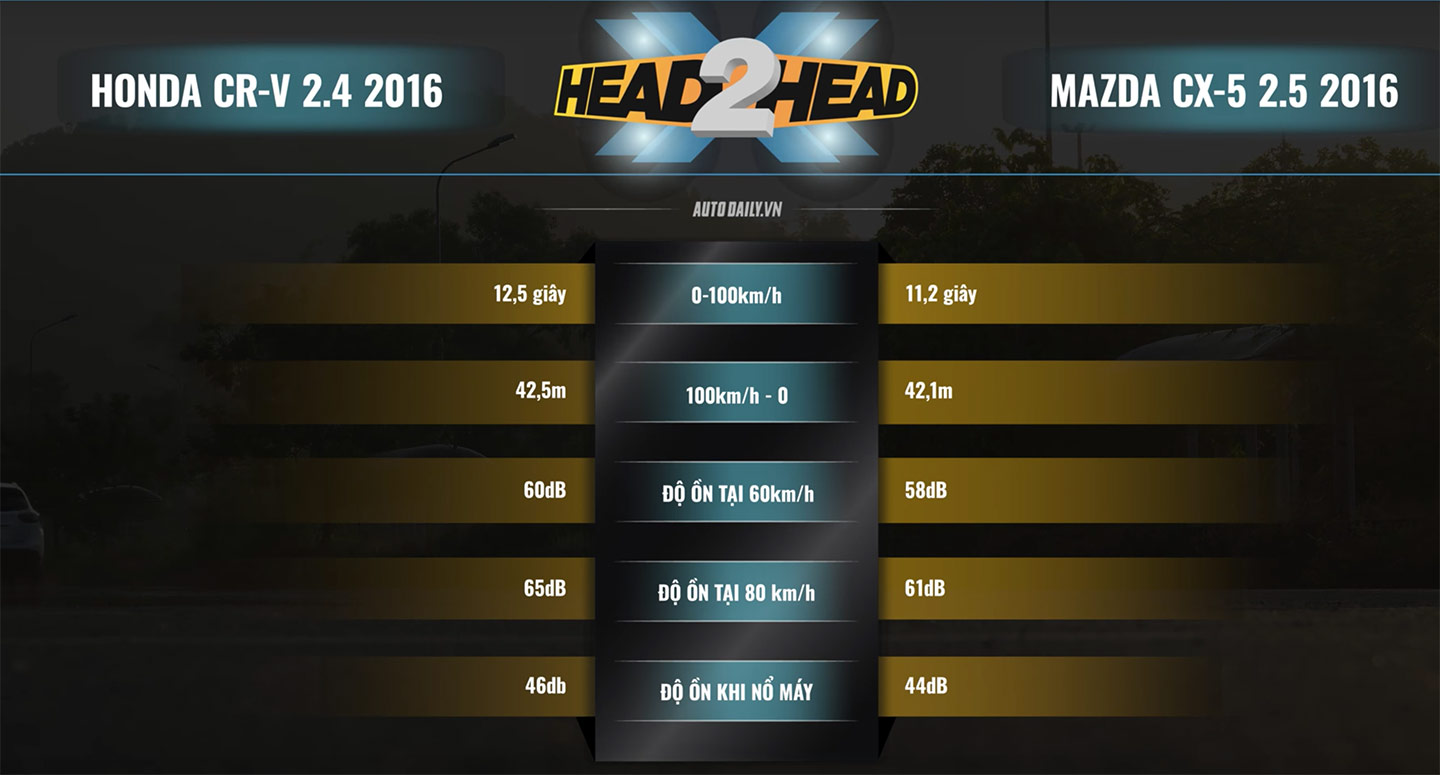
In general, in terms of performance, the CR-V proves to be better than the CX-5 with its stability and firmness. When driving at high speeds, the car stays planted on the road with no feeling of floatiness or excessive vibrations.
Safety features
|
Car model |
Mazda CX-5 2.5 AT AWD |
Honda CR-V 2.4 AT |
|
Anti-lock braking system |
Yes |
Yes |
|
Electronic brakeforce distribution |
Yes |
Yes |
|
Emergency brake assist |
Yes |
Yes |
|
Electronic stability control |
Yes |
Yes |
|
Anti-slip regulation |
Yes |
|
|
Rollover prevention |
Yes |
|
|
Hill-start assist |
Yes |
Yes |
|
Downhill assist |
No |
No |
|
Emergency brake warning |
Yes |
|
|
Theft deterrent system |
Yes |
Yes |
|
Backup camera |
Yes |
Yes |
|
Backup sensors |
No |
No |
|
Air conditioning |
2-zone automatic |
2-zone automatic |
|
Airbags |
6 |
4 |
Conclusion
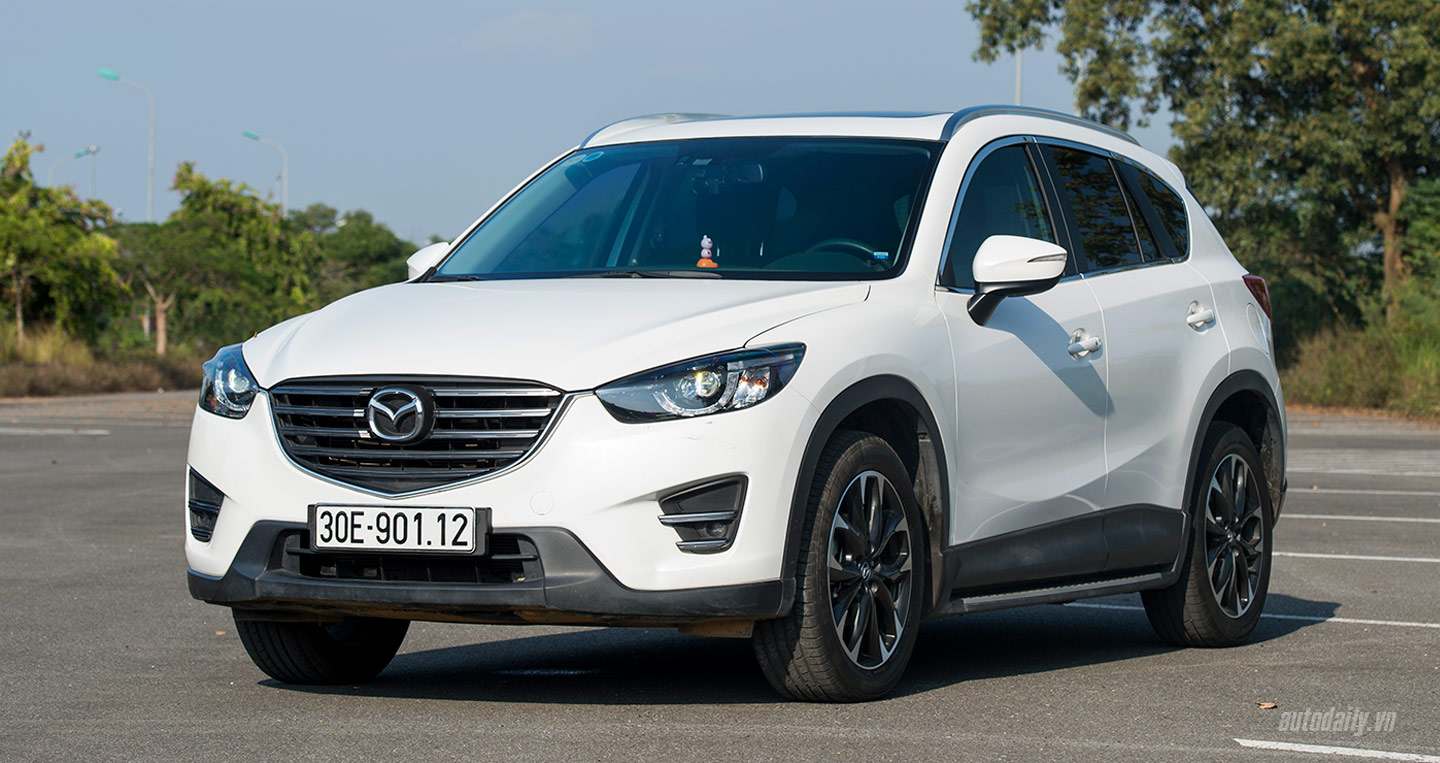
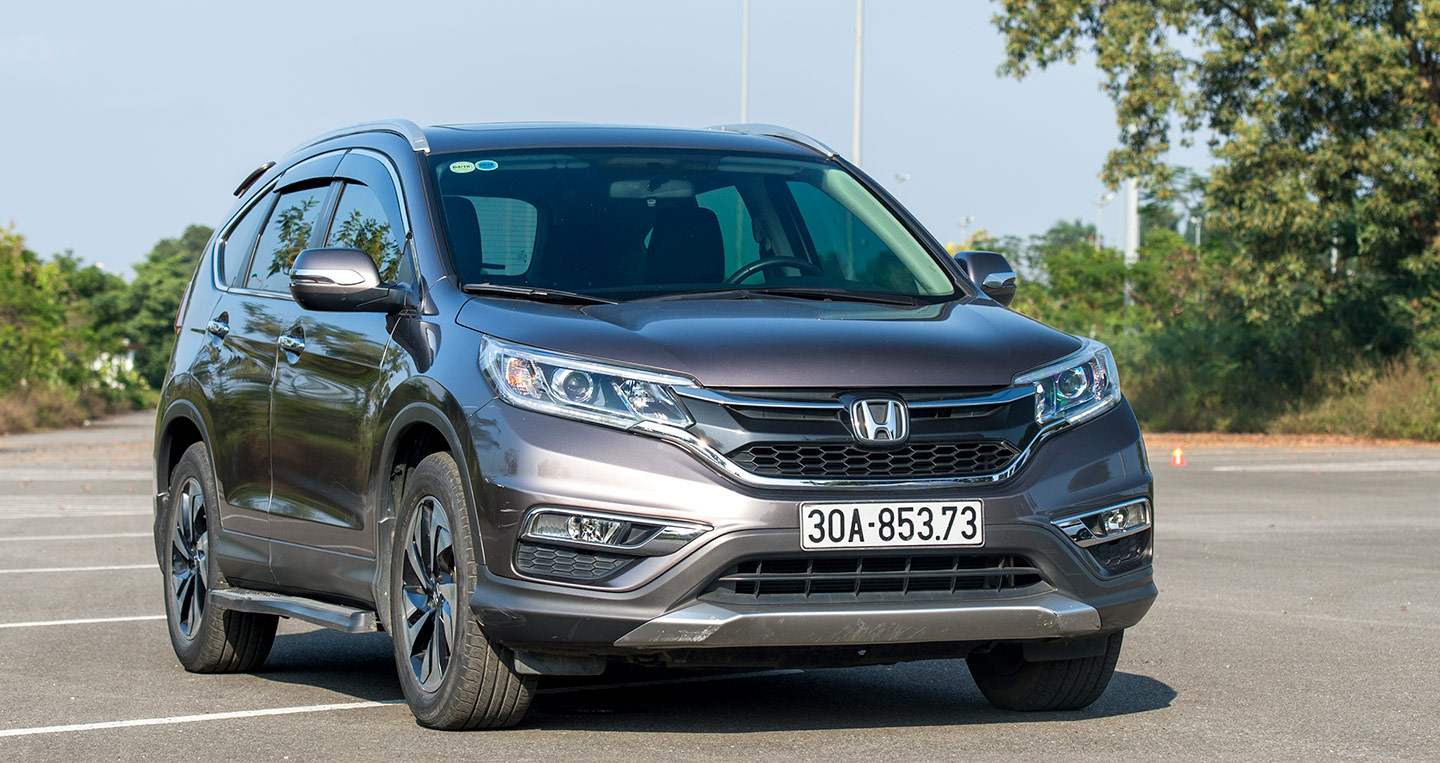
Ignoring the design category because of the subjective factors of each person. Safety features are a strong point of the Mazda CX-5 with some top-of-the-segment features such as rollover prevention, traction control, and emergency brake warning, while the Honda CR-V presents itself as an all-around car with impressive technology, safety, and impressive performance.
4banhteam (forum.autodaily.vn)







